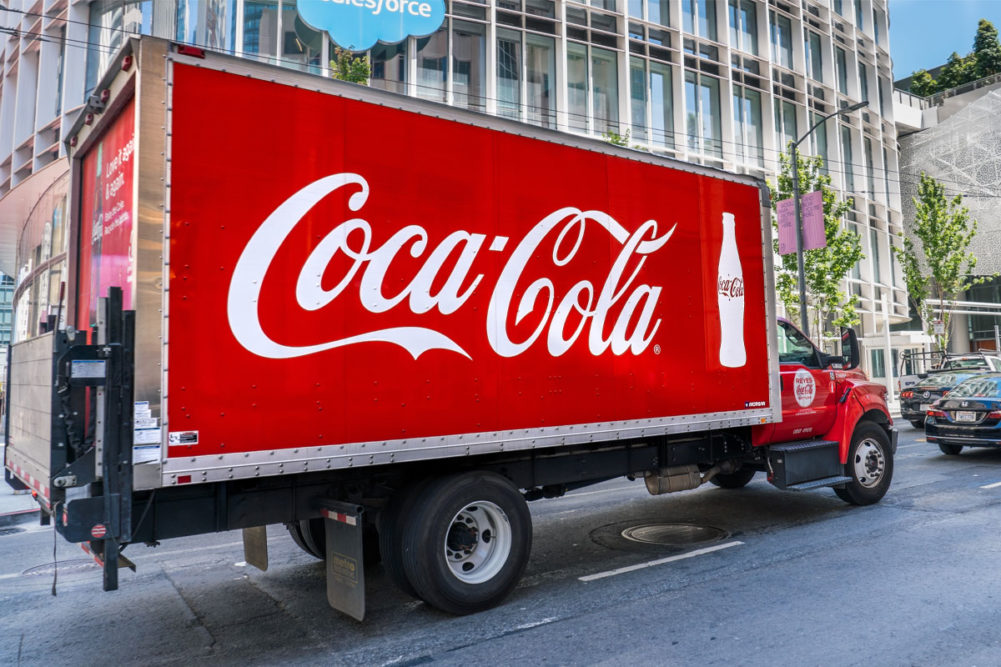ATLANTA — Higher prices for food and beverages are leading to shifts in consumer purchasing patterns. The Coca-Cola Co. sees those shifts and, in part, is relying on its momentum in fiscal 2022 to adapt and continue to grow. That momentum prompted management to raise its guidance for the year to 15% organic revenue growth from 14% and currency-neutral earnings per share growth from 15% to 16%.
“In an operating environment that increasingly puts more variables into the equation than we’ve seen in the past, we are focused on delivering and executing for growth,” said James Robert B. Quincey, chairman and chief executive officer, during an Oct. 25 conference call to discuss third-quarter results. “We are encouraged by what we are seeing in the business.”
Mr. Quincey said during the call that consumer elasticities in core categories have continued to hold up, but cracks are starting to appear.
“The short answer is, yes, we’re seeing some changes in consumer behavior,” he said. “I mean, overall, in the third quarter, (the) consumer remained pretty resilient and elasticities were at the better end of the spectrum.”
But, he added, changes are starting to show up in the US retail dollar channel and in the European at-home market.
“There’s clearly the impact of inflation running ahead of wages (that) is starting to come through now that the summer is over and back to school has happened,” Mr. Quincey said. “Our focus and our confidence in our year-to-go and going into next year is about the momentum we’ve created in our business over the years and our ability to not just to continue with marketing and innovation, but to leverage all the thinking behind revenue growth management and the price pack promo architectures to maximize affordability, and therefore, accessibility of our categories for those consumers that are under pressure.”
The solution, Mr. Quincey said, is to “extend the price ladder.” That is being done in the United States by offering smaller bottles or smaller multipacks, and in Japan by taking a 500-milliliter package and splitting it into two varieties, one that is 350 milliliters and the other that is 700 milliliters.
“One of the recession behaviors tends to be to try and reduce the dollar outlay of the basket, and therefore, the price point becomes even more important than the price per liter,” Mr. Quincey said.
The Coca-Cola Co.’s net income for the third quarter ended Sept. 30 rose 14% to $2.8 billion, equal to 65¢ per share on the common stock.
Quarterly sales rose 10% to $11.1 billion.
Price/mix grew 12% during the quarter and unit case volume rose 4%, with growth across most operating segments, according to the company.
In North America, specifically, price/mix grew 15% due to raising prices and recovery in the company’s fountain business. Unit case volume grew 1%, led by sparkling soft drinks, dairy beverages and recovery in away-from-home channels.
“In North America, we drove volume and value share gains through strong core sparkling performance, complemented by robust innovation and music-led experiential marketing despite intermittent supply chain challenges,” Mr. Quincey said. “Smartwater growth was strong during the quarter and innovations like Coca-Cola Creations and Minute Maid Aguas Frescas continue to expand and exceed expectations.
“The Coca-Cola Value Bundle, a collection of core sparkling offerings, providing more choices to cost-conscious consumers, is helping to retain and recruit more consumers while creating value for our customers.”
The company will not provide guidance for fiscal 2023 until the fourth quarter, but John Murphy, president and chief financial officer, expressed confidence the momentum from fiscal 2022 will carry over to next year.
“We do see a path to generating US dollar EPS growth next year,” he said. “Clearly, there's a lot of variables in the equation. And if anything, there's even more variability with some of those variables. We’ve talked a lot about our strategy is to lead a sustainable equation from the top line.
“We continue to have confidence in the momentum that our business has and to continue that momentum. The cost outlook does remain more elevated than we are used to. But we've got a higher revenue, higher cost algorithm that we're looking to manage going into next year.”





